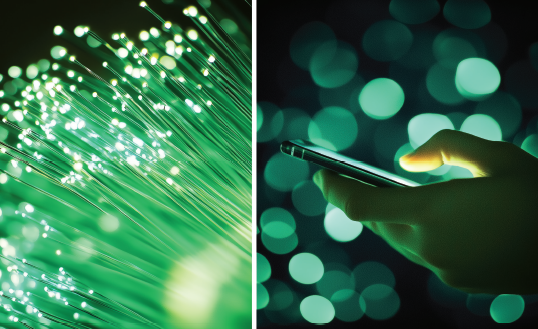- Reliable Neighbors
- 603-529-9911
Why Is Fiber Internet Better Than 5G Home Internet?

Fiber internet provides much higher speeds and reliability
You may be hearing a lot these days about the 5G home internet offered by cellular providers. But what exactly is 5G? How does it differ from fiber internet? And which type of service will give you and your family the best online experience at home?
Before we answer those important questions, let’s clear up a common misconception. The abbreviation 5G refers to the fifth generation of wireless technology for cellular networks, which was initially released in 2019. The “G” in 5G does NOT stand for gigabit and has nothing to do with internet speeds. (See the sidebar for more details.)
Fiber Internet Is More Available
OK, now let’s get back to comparing these two internet technologies. A good place to start is by looking at their availability. Neither 5G home internet nor fiber internet services are available everywhere in this country. However, fiber has been around longer. According to the latest data from the Federal Communications Commission, approximately half of U.S. households have access to fiber internet connections. By contrast, 5G home internet service is still fairly new and is more limited.
It’s important to note that fiber internet is increasingly available in rural areas thanks to local internet service providers and cooperatives that have built fiber networks, often with help from federal funding. The primary federal funding program currently available for fiber network builds is the Broadband Equity, Access, and Deployment (BEAD) Program,” which allocates $42.45 billion to expand high-speed internet access across the United States.
Even if you get 5G on your smartphone at home, you may not be able to access 5G home internet for use on your connected devices such as laptops, tablets, TVs, smart home items, etc. This is because cellular providers prioritize their mobile phone customers, and only the extra capacity on their network can be sold to customers as 5G home internet.
A Side-by-Side Comparison
Let’s say both 5G home internet and fiber internet are available to you. Which is the better choice? Here’s a quick summary of key factors to consider.
5G Home Internet
How It Works
5G home internet uses the 5G network towers of a cellular company to provide a fixed wireless connection. Speeds will vary by location, depending on how far the customer is from a local tower or transmitter.
Speeds
Speeds offered by 5G home internet aver-age just 150 Mbps. What’s more, several factors can adversely affect speeds, including network congestion and line-of-sight issues from obstacles such as buildings or terrain. Even inclement weather can slow things down.
Reliability
5G home internet can get bogged down by high-traffic demands and technical issues stemming from poor cell service.
Fiber Internet
How It Works
Fiber internet uses fiber-optic cables consisting of bundled strands of glass, which are buried under the ground to provide a direct internet connection. Fiber is the gold standard.
Speeds
A range of fiber internet plans are typically offered, with speeds up to 2 Gbps (2,000 Mbps) and more. You may also be able to get symmetrical speeds, meaning your uploads are just as fast as your downloads.
Reliability
Fiber internet has a much larger capacity to carry data and is less prone to technical malfunctions or slowdowns. This results in a connection you can count on, with a proven track record of 99.9% reliability.
It’s clear that despite the hype around 5G, fiber remains the go-to connection type for extremely fast and reliable internet. Simply put, you can’t do better than fiber internet. It’s the preferred connection – and the best overall value – for large households with multiple users and devices, people who work from home, online gamers, and streaming enthusiasts.
